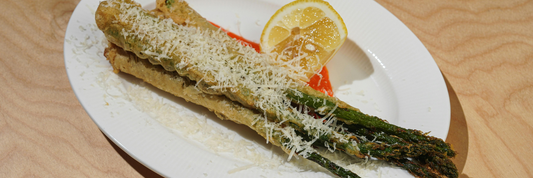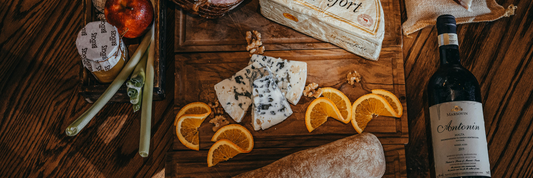When it comes to packaging hot, greasy, or portable foods, the foil sandwich wrap is an industry essential. Combining the heat retention of aluminum with the grease resistance of paper, foil sandwich wraps are widely used by cafés, food trucks, delis, and caterers for burgers, burritos, breakfast sandwiches, and more. This guide explores the construction, benefits, sizes, and best uses of foil sandwich wrap to help foodservice businesses choose the right solution for quality and performance.
- Top 6 Sandwich Wrap Paper Options to Keep Your Sandwiches Fresh and Tidy
- Should You Choose Wax Paper Sandwich Bags Over the Plastic Bags?
- What is Aluminum Foil? Characteristics and Applications of Aluminum Foil
What Is Foil Sandwich Wrap?
A foil sandwich wrap is a type of food packaging commonly used by restaurants, food trucks, cafés, and delis to wrap hot or greasy food items such as sandwiches, burgers, and burritos. These wraps combine a layer of aluminum foil with a paper backing, providing both thermal insulation and grease resistance.
Foil sandwich wraps are designed to retain heat, protect food integrity during handling and transport, and keep the outer surface clean for the end customer. They are widely used in the foodservice industry for takeout, delivery, and grab-and-go items thanks to their versatility, ease of use, and functional performance.

Insulated Foil Sandwich Wrap Materials & Construction
Insulated Foil Wrap: Aluminum + Paper Laminate
Most foil sandwich wraps are constructed by bonding a layer of food-grade aluminum foil to a grease-resistant paper liner. The foil side faces outward to reflect heat and maintain temperature, while the paper side contacts the food to absorb excess moisture and grease.
Honeycomb Cushion Design for Thermal Insulation
Some advanced foil wraps feature a honeycomb-textured paper backing, which creates air pockets that enhance thermal insulation. This cushion structure not only helps food stay warmer for longer but also adds structural strength, preventing the wrap from collapsing or tearing during handling.
Grease-Resistant Foil vs Standard Foil
Unlike basic aluminum foil, sandwich-specific wraps use a grease-resistant liner that prevents oils and sauces from soaking through. This feature keeps both the food and the customer’s hands clean, making it ideal for fast-casual and takeout environments.
Food-Grade Certifications
Quality foil sandwich wraps typically meet FDA regulations for food contact and may carry Kosher certification. They're also designed for high-temperature tolerance, often rated safe for use up to 250 °F, making them suitable for use under heat lamps or in warming drawers.
Pre-Cut Sheets vs Rolls
Foil sandwich wraps are available in two main formats:
-
Pre-cut sheets for quick-service efficiency
-
Rolls or perforated rolls for custom-size applications in higher-volume or specialty kitchens

Foil Sandwich Wrap Sizes & Formats
Foil sandwich wraps are manufactured in a variety of sizes and formats to accommodate different food items and service setups.
Standard Dimensions
Common pre-cut sheet sizes include:
-
10¾" x 14" – Ideal for standard burgers or small sandwiches
-
14" x 16" – Suitable for subs, hoagies, or large wraps
-
18" x 18" – Used for oversized burritos or multi-layered sandwiches
Cushion-Fold or Flat Pre-Cut Sheets
-
Cushion-fold wraps include the honeycomb paper backing for added insulation and structure.
-
Flat foil wraps may be simpler in design but are still functional for quick wrapping needs.
Rolls and Perforated Formats for Custom Sizing
In addition to sheets, some manufacturers offer continuous foil-and-paper rolls, either non-perforated or pre-perforated. These are ideal for operations needing flexibility in size or wanting to reduce waste by cutting only what’s needed.
Key Features & Advantages of Foil Sandwich Wraps
Foil sandwich wraps offer several functional advantages that make them a preferred choice in commercial food packaging:
Heat Retention
The aluminum foil exterior reflects heat, while the paper layer insulates from within. When wrapped properly with the foil side facing out, the sandwich stays warm for an extended period, ideal for delivery, catering, or self-serve displays.
Grease Resistance
The paper backing absorbs oils and moisture from hot food items, preventing seepage. This ensures that packaging remains clean and easy to handle, enhancing the customer’s experience and minimizing mess.
Structural Support
The honeycomb cushion design in some premium wraps helps maintain the shape of the sandwich during storage and transit. This prevents the food from getting crushed or misshapen, especially important for burgers or stacked sandwiches.
Moisture Absorption
Unlike plain foil, the paper component absorbs excess steam and moisture, reducing the risk of sogginess. This helps preserve the sandwich’s texture, especially for crispy bread or toasted items.
Freezer and Oven Safe (Up to ~250 °F)
Foil sandwich wraps are generally safe for use in freezers and heated holding equipment, with many products rated for temperatures up to approximately 250 °F. However, they are not suitable for use in microwaves due to the foil component.

How to Use Foil Sandwich Wrap
Foil sandwich wraps are designed for ease, efficiency, and performance in high-volume kitchens and mobile food operations. Following best practices ensures your food stays hot, presentable, and safe for customers.
Best Practices for Wrapping Burgers, Burritos, and Subs
- Center the item on the sheet with the foil side facing out
- Fold the bottom edge over the food, tucking tightly under
- Continue folding side edges inward in envelope style
- For subs or burritos, roll from one end to the other, then fold both sides inward
- Always apply firm pressure to remove air gaps and prevent leaks
Well-wrapped items are easier to stack, retain heat longer, and travel better for takeout or delivery.
Comparison Table: Foil Sandwich Wrap vs Other Food Wraps
| Feature | Foil Sandwich Wrap | Parchment Paper | Paper Deli Wrap | Plastic Wrap / Zip Bags | Plain Aluminum Foil |
|---|---|---|---|---|---|
| Heat retention | Excellent | Minimal | Very low | Not designed for heat | Moderate |
| Grease resistance | Strong | Moderate | Moderate | Moderate | Can seep through |
| Structural support | Durable, cushioned | Light | Basic | No structure | Moldable but thin |
| Compostability | Not compostable (foil + paper laminate) | Fully compostable | Compostable in most programs | Not compostable | Rarely accepted in compost |
| Recyclability | Limited (depends on local facility) | Easily recyclable | Recyclable if clean | Varies by region | Widely recyclable |
| Safe for acidic foods | Paper layer helps, but caution advised | Safe | Safe | Safe | Not safe (may react) |
| Typical cost per unit | Medium to high | Low to medium | Low | Low | Low |
Applications & Use Cases
Foil sandwich wraps are a staple across the foodservice sector, especially where portability, freshness, and clean presentation matter.
Food Trucks, Cafés, Delis, Catering
-
Perfect for high-speed food prep environments
-
Keeps food intact during transport and handling
-
Ideal for hot items, grilled sandwiches, wraps, and breakfast items
Grab & Go Hot Food
-
Great for display cases or shelf-ready items
-
Used for burgers, burritos, breakfast sandwiches, and subs
-
Maintains temperature for longer periods without sogginess
Delivery and Takeout
-
Helps preserve food quality and warmth from kitchen to doorstep
-
Prevents leakage or mess inside delivery bags
-
Common in third-party delivery platforms (Uber Eats, DoorDash)
Heated Display Cabinets
-
Compatible with heat lamps, warming drawers, and countertop display cases
-
Keeps food visible and appetizing while maintaining temperature
-
Common in convenience stores, gas stations, and fast casual chains
Ideal for Concessions, Stadiums, and Bakeries
-
Suitable for high-volume sales environments
-
Easy to grab, label, and stack
-
Used for hot dogs, meat pies, pastries, and more
FAQs About Foil Sandwich Wrap
What side of foil sandwich wrap goes out?
The shiny foil side should face outward to reflect heat, while paper goes inside
Can you bake a sandwich in foil wrap?
Not recommended in an oven; foil wraps are meant for heat lamps and warming trays, not direct baking.
Is foil sandwich wrap safe for acidic foods?
Acidic foods can leach aluminum, keep the paper side against the food to reduce contact.
Can foil sandwich wrap be recycled?
Single-layer foil is widely recyclable; laminated wraps (foil+paper) may not be accepted curbside, check local guidelines.
Does foil sandwich wrap keep food hot?
Yes, honeycomb cushions trap heat and moisture, keeping sandwiches warm and fresh
Conclusion
A well-designed foil sandwich wrap does more than just contain food—it enhances the eating experience by keeping items hot, intact, and mess-free. Whether you're serving burgers from a food truck or preparing sandwiches for grab-and-go, foil wraps offer durability, insulation, and presentation in one cost-effective solution. For kitchens that value efficiency and customer satisfaction, foil sandwich wrap remains a practical, high-performance packaging choice.
Related Articles:




